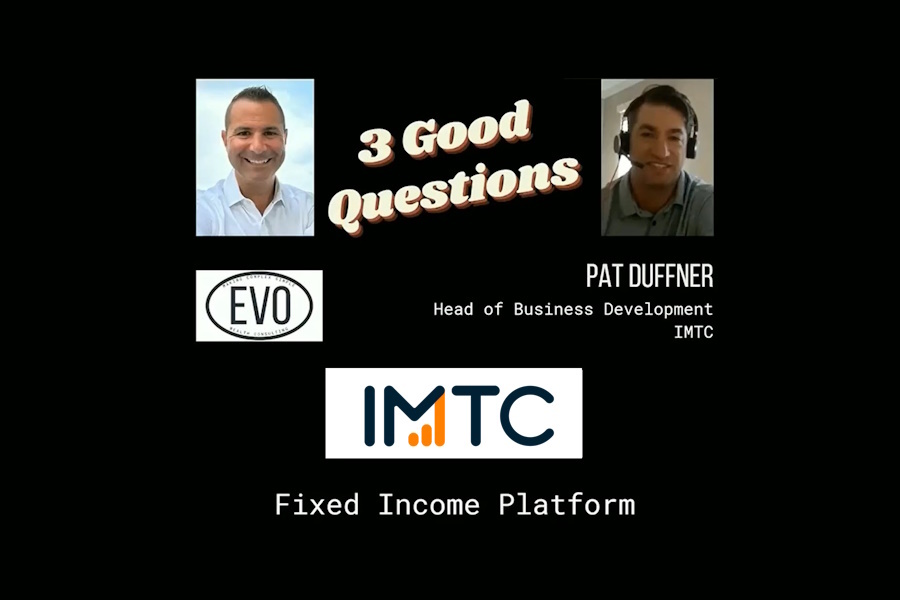7 Key Takeaways on the Future of Fixed Income from the 2022 Fixed Income Leaders Summit

Our team at IMTC attended the 2022 Fixed Income Leadership Summit (FILS) held in Nashville, TN in late June. While we enjoyed the Nashville scene and a decent amount of socializing outside of the scheduled sessions, the main point of the conference from our point of view was to exchange views on how to innovate on the buy side, particularly with respect to fixed income trading and portfolio management. For those who were not able to attend, we offer our perspective on the conference highlights.
Markets are challenging, and conditions are not expected to improve in the near-term
Not surprisingly, the current state of the markets was an unavoidable topic of discussion. Thus far, 2022 has delivered the worst returns to bond investors in decades (the same is true for U.S. equities, but that is not our focus here). Inflation, the recession outlook, and deteriorating liquidity were the biggest concerns voiced by conference attendees and panelists. “Runaway inflation” was a familiar phrase, along with some anxiety about how the Fed’s plans to aggressively raise its Fed Funds rate target (and allow its holdings of Treasuries and mortgage-backed securities to run off) will affect future growth. Many are concerned that rising interest rates may not curb today’s inflation, which is largely due to congested supply chains (fingers pointed at China’s Covid-related lock-downs), and high energy costs caused by Russia’s invasion of Ukraine, both of which are out of the Fed’s (or any central bank’s) control.
Some suggested there may be opportunities in the credit markets, favoring active management, although many see a need for a higher credit risk premium. The new issue corporate market has slowed, declining roughly 18% year-over-year, and munis, typically a safe haven, have also had a tough go. Still, the general view is that we are not headed for a credit crisis—we are simply reducing excess in the system. While the U.S. may suffer only a mild recession, it is not yet a good time to extend duration. Across the Atlantic, the European Central Bank is perceived to be behind the Fed in responding to inflation; once the ECB starts to raise rates, a recession seems almost inevitable. Nonetheless, we heard the comment that inflation of 3%-4%, while still painful, would be better than deflation.
The consensus is that although investors have already priced in series of rate hikes across developed economies, the markets will be difficult and volatile for the remainder of 2022.
While markets were clearly a hot topic, many of the sessions and panelists were focused more on how fixed income firms are viewing the future of the industry. Here, we summarize seven themes that stood out as the key takeaways across the sessions.
1. Data aggregation and desktop interoperability
Advanced analytics and trading platforms can save hours previously spent manually scraping data that traders need to determine how and where they can gain an edge. More data, and better, more automated data aggregation, were identified as essential to the buy side today. Still, many panelists noted that data alone does not improve portfolio management or trading efficiency; the goal is to deliver contextually relevant information to the right person at the right time. Visualization tools are needed to extract insights from the data and take appropriate action quickly. One panelist stated that while data aggregation is important, visualization and usability are essential, along with a user interface that clearly shows what is needed to click to accomplish a task, noting “we can’t have systems inviting you to make mistakes.”
Additionally, participants agreed that the days of siloed platforms are long gone—interoperability (not easy to say, but critical to competing in today’s environment) is essential. Order Management Systems (OMS) must connect seamlessly to Execution Management Systems (EMS) to smooth out the workflow between portfolio managers and traders (or even better, an Investment Management System such as IMTC). In fact, one could say that…
2. EMS is the new OMS
Much was said about the importance of having an EMS that provides traders with the information they need by aggregating liquidity, connecting to the sell side, and providing transaction cost analyses. Still missing from EMS are the orders in an OMS that have not yet been exposed. This focus on having a feature-rich EMS reflects the fact that many firms now view the trading desk as a source of alpha. IMTC’s CEO, Russell Feldman (a panelist for a discussion on “Leveraging Technology to Greater Effect”) commented that given this view, speed is critical, and the ability to generate insights across portfolios that lead to well-executed trades is part of a trading desk’s alpha-generating potential.
3. The rise of portfolio optimization
Automation, new technology, and innovation have always been popular topics at FILS, but this was the first time that portfolio optimization technology was specifically identified as a key theme. The ability to automate optimization is linked to the ability to customize separately managed accounts (SMAs) at scale (see #5 below), as optimizing portfolios one at a time is horribly inefficient. Some firms are building solutions to address this need in-house; some are looking to firms like IMTC for help.
According to Jim Switzer, global head of fixed income trading at AllianceBernstein, “Fixed income investors need to look at the real-time investable universe, (asking) ‘Is there anything out there that fits our portfolios that we don’t know about?’ An Optimizer is the Holy Grail.” He went on to say, “I only know of a few firms that are doing this—we’re doing it, and IMTC is doing it well.”
Read more about how IMTC helps firms with portfolio optimization here.
4. Build vs. buy
Instead of trying to settle the long-standing build versus buy debate one way or the other, many now argue that the more relevant question is how to have the best of both approaches. Dan Schleifer, CEO of Finsemble/Cosaic, noted that firms will always want to customize their technology platforms to capture their own way of doing things. However, siloed, legacy systems that require ongoing support resources and maintenance are an industry-wide problem; the goal is to combine them in a way that ensures those platforms are interoperable. Many are also thinking the best solutions will be to buy commoditized solutions and to build the unique competitive differentiators (or to work with technology firms to customize their solutions specifically to address your firms’ needs). Audrey Blater, senior analyst at Coalition Greenwich, says the build versus buy decision is now a build, buy, and interoperate (BBI) discussion. She noted that Covid-induced working from home motivated many firms to adopt best-of-breed solutions as it is not practical to use multiple screens and passcodes across disparate systems.
5. SMAs gaining traction
The popularity of SMAs is increasing across the industry, especially for portfolios containing municipal bonds, but even for those that do not. Seth Bernstein, President and CEO of AllianceBernstein, observed that in a rising rate environment, it is difficult to manage accounts that hold mutual funds, as they only price at the end of each day. He also points out that the asset management industry “…has a structural issue in that we sell daily products that have lots of instruments that don’t trade daily.” This is particularly challenging when liquidity is thin, as is typical in the muni market. Using SMAs, managers can customize individual holdings to meet each client’s specific needs, and reap tax benefits in a way that is not feasible in a commingled account.
6. Traders need both tech skills and old school know-how
A number of panelists discussed how the skills that firms seek in a fixed income trader are going to change as a result of this emphasis on new technologies and increased automation. Tying into the theme of the rise of optimization, many believe traders will need quant/coding skills. However, to be effective a trader must fully understand the markets and that will not be possible for traders who spends most of the day writing code. While being open to, and skilled in using technology will be important for traders, the panelists overwhelmingly agreed that the ability to communicate effectively is still the most important skill on the trading desk.
7. The evolution of new trading protocols
Fixed income investors are embracing new trading protocols. Hot topics under this theme included the potential for all-to-all trading, and how electronification of fixed income has led to a rise in portfolio trading and algo trading. Buyside firms and technology platforms continue to make strides in aggregation and automation protocols, and panelists expect trade order flow will be the next step in the process to be automated, as part of the goal of achieving automated optimization. While new aggregation capabilities and protocols are creating a more direct relationship between buy and sell side firms and promote best execution, panelists noted that buy side firms really do care who is on the other side of the trade.
Other noteworthy topics discussed include (1) the use of distributed ledger technology (blockchains) to aggregate market data and improve price discovery in real-time, (2) how to move beyond RFQs and leverage pre- and post-trade data to achieve best execution, and (3) the need for a “control room and kill switch” within EMS to ensure human inputs are within the bounds of reasonableness (to avoid fat-finger errors).
The Fixed Income Leadership Summit is a great opportunity to learn about trends that buy side firms cannot afford to overlook. We hope to see you there next year.
Want to see our Optimizer in action? Schedule a demo today.
.





